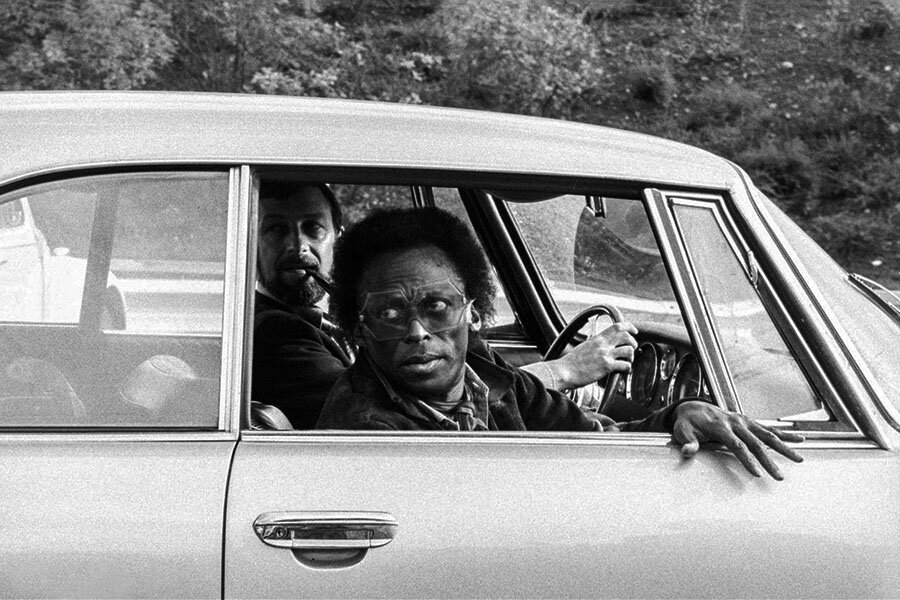Bio: Miles Davis
/Miles Davis was born in Alton, Illinois, on May 26th 1926. He went on to become one of the most influential and acclaimed figures in jazz history.
Davis was raised in East St. Louis by his mother, a music teacher, and his father, a dentist. He received his first trumpet in 1935 as a gift from a friend of his father.
Young Miles Davis began to take lessons and music soon became the most important thing in his life.
On his 13th birthday, Davis received a new trumpet from his father and started to play in local bands.
During his high school years, Davis filled a vacant spot in the Rhumboogie Orchestra and quickly became the band’s musical director. Soon afterwards, legendary saxophonist, Sonny Stitt, tried to persuade Davis to join the Tiny Bradshaw band which was passing through town. However, Davis’s mother insisted he finish high school.
Davis graduated in January 1944. In July, his girlfriend gave birth to his first child, a daughter. That same month Davis filled in for Billy Eckstine’s trumpeter when they visited St. Louis. Davis performed with the band for two weeks and subsequently decided to head for New York to pursue a career in music. He joined the Institute of Musical Arts in September 1944, but frequently missed classes to jam with club regulars at Minton’s and Monroe’s in Harlem.
Davis failed to register for the autumn term of his course in mid 1945 because he wanted to play full-time. He began to perform at clubs and, in April 1945, recorded as a session musician for Herbie Field’s band.
Later that year, he recorded as the Miles Davis Sextet and replaced Dizzy Gillespie in Charlie Parker’s quintet, Reboppers.
Over the next couple of years, Davis continued to play with Eckstine and Parker and also began collaborations with Benny Carter, Charles Mingus and Dizzy Gillespie.
In August 1947, Davis had his first studio session as a band leader with the Miles Davis All Stars. The outfit signed a recording contract with Capitol for a series of singles, but the All Stars had disbanded by the end of 1949.
For a while, Davis found little work and became depressed. Heroin use became an expensive problem which caused a further reduction in employment. Things improved in 1951 when he signed a recording contract with Prestige but, for the next few years, money was still tight.
Having spent time back home in St. Louis and also in Detroit, Davis returned to New York fit and well in February 1954. Prestige granted him a new contract which was followed in July 1955 by a long-term deal with Columbia Records. Davis was given a $4000 advance from Columbia and immediately went out and purchased a Mercedes-Benz 190 SL which was soon followed by a Jaguar XK140 FHC.
Davis still had four albums to produce for Prestige so the deal was that his recordings for Columbia would remain unreleased until his agreement with Prestige expired.
During the second half of the 1950s, Davis typically released three or four albums every year.
Between March and April of 1959, Davis created his seminal work, Kind of Blue. Hailed as a masterpiece of modern music, it featured a number of superb performers at the height of their powers: John Coltrane appeared on tenor saxophone, Julian ‘Cannonball’ Adderley on alto saxophone, Bill Evans and Wynton Kelly on piano, Paul Chambers on bass and Jimmy Cobb on drums. Most of the five track record was sealed in one take.
Kind of Blue was released to critical acclaim in August 1959 and went on to become the bestselling jazz record of all time.
In December 1959, Davis married Frances Taylor, a dancer he had met in Los Angeles in 1953.
With his new found wealth, Davis was able to indulge his passion for high end sports cars. He acquired a Ferrari 250 GT Spyder California which was followed by a 250 GT Berlinetta Lusso. Davis loved to drive fast and US Ferrari importer, Luigi Chinetti, reputedly tried to convince him to try his hand at racing.
By 1963, Davis was using a considerable quantity of alcohol and cocaine to reduce joint pain caused by sickle cell anaemia. Davis became temperamental and jealous; his relationship with Taylor involved numerous incidents of domestic violence and she filed for divorce in 1966.
During the 1960s, Davis made a series of more abstract recordings that helped pioneer the post-bop genre as he transitioned to an electric period.
In 1967, Davis purchased a Ferrari 275 GTB/4 from Luigi Chinetti. Soon afterwards, the Ferrari was joined by a Lamborghini Miura P400.
In September 1968, Davis married his second wife, the model and songwriter, Betty Mabry. Mabry introduced Davis to a number of popular rock, soul and funk musicians. However, the two divorced in 1969 after Davis accused Mabry of having an affair with Jimi Hendrix.
Between August 1969 and January 1970, Davis worked on what would become his second biggest selling album, Bitches Brew.
Early in October 1969, Davis performed a show at Brooklyn’s Blue Coronet club. Afterwards, he attempted to drive a female companion home to his apartment on East 13th Street. His red 275 GTB/4 had been parked out the front of the club and was easy to spot by three armed men who emerged from a gypsy cab and fired five shots into the Ferrari. One grazed Davis’s hip but he and his friend were otherwise uninjured. Most of the bullets were trapped in the car.
Davis later wrote in his autobiography “I later found out that the reason I had been shot was because some black promoters in Brooklyn hadn’t liked the fact that white promoters were getting all the bookings. When I played the Blue Coronet that night, they thought I was being an asshole by not letting the black promoters do the booking.”
Davis subsequently took to driving around New York with a .357 Magnum and a set of brass knuckles. He was arrested with the latter in the 275 GTB/4 during 1970.
The release of Bitches Brew in April 1970 helped spark a resurgence in the commercial popularity of jazz.
Davis continued to tour extensively and often liked to be driven in a Ferrari by his tour manager, Bobby Leiser. During the 1970s, he experimented with rock, funk, African rhythms and electronic music.
In 1972, Davis was involved in a serious car accident with his green Lamborghini. While driving in wet conditions under influence of cocaine, he crashed the Miura when trying to turn left across three lanes of the West Side Highway in Manhattan. The car hit an exit ramp and was heavily damaged. Davis broke both ankles and was hospitalised for several weeks. He didn’t play publicly for almost a year. The wrecked Miura is believed to have been replaced with a Ferrari 365 GTB/4.
Despite his ongoing success, by the mid 1970s, Davis was troubled by a number of health issues to include pneumonia, osteoarthritis, stomach ulcers and the aforementioned sickle-cell anaemia, He frequently relied on alcohol, codeine, and morphine to get through his engagements.
In 1975, he retired from the music business owing to ill-health. Over the next few years he led a fairly reclusive lifestyle in New York as his dependency on alcohol and cocaine worsened.
By 1979, Davis had begun a relationship with actress, Cicely Tyson, with whom he overcame his cocaine addiction and rekindled his enthusiasm for music.
In October 1979, Davis’s contract with Columbia (who had continued to pay him large advances) was renewed and the 1980s garnered his highest level of commercial recognition.
Davis also returned to his love of European sports cars; he purchased a Ferrari 308 GTS and Jaguar XJS.
Miles Davis continued to record and perform up to his death. He died from the combined affects of a stroke, pneumonia and respiratory failure on September 28th 1991. He was 65 years old.
Text copyright: Supercar Nostalgia
Photo copyright: unattributed




















